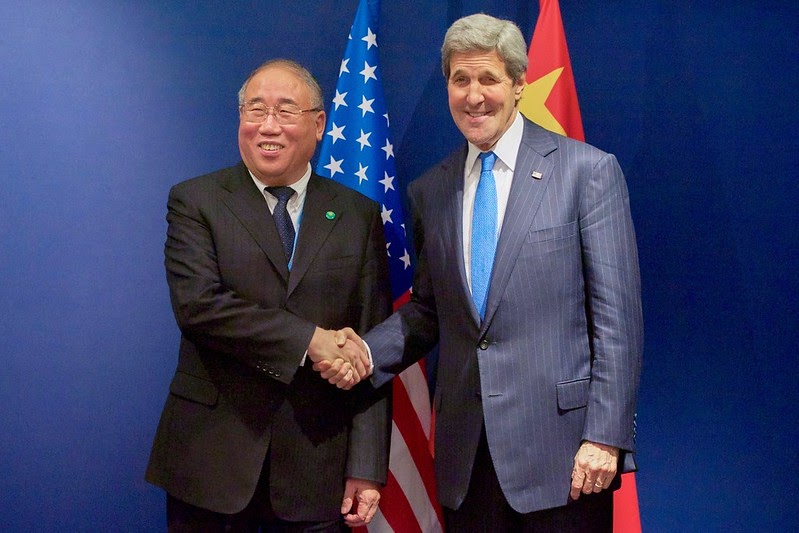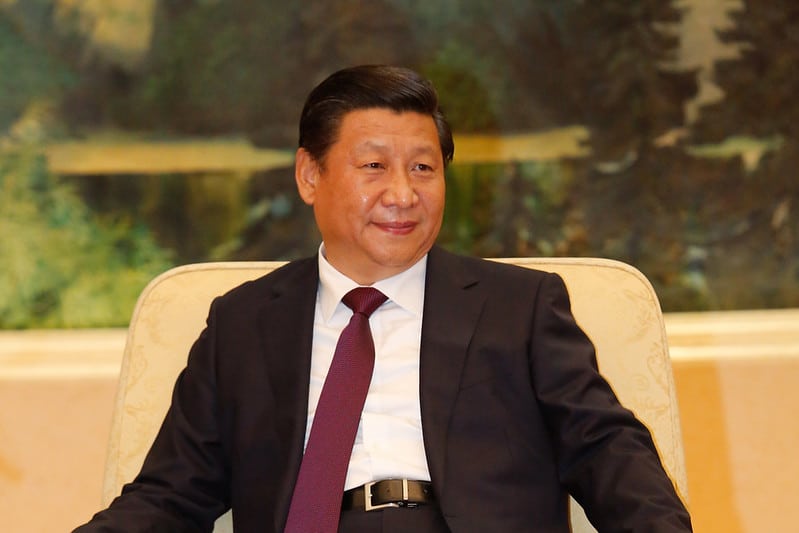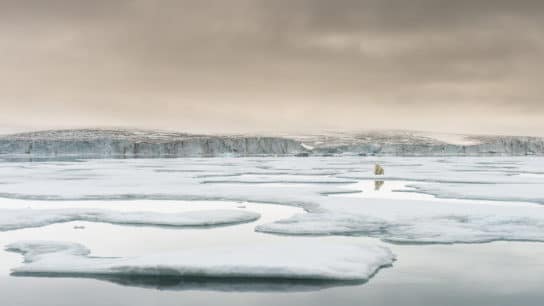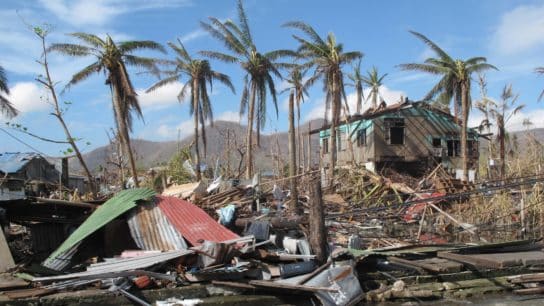Upon signing a swathe of climate-related executive orders following his inauguration, US President Joe Biden announced that, “the US must lead the global response against climate change.” Similar sentiments have been echoed in recent years by major superpowers, including China, the UK and the EU. At its simplest, climate leadership refers to positioning oneself as ideally as possible in advance of the economic and political transitions that accompany the global response to climate change. It is an attractive term, but also vague and disturbingly competitive. Could the world get by just fine without having a single nation guiding the way in climate policy and ambitions? If it can’t, who would be our ideal climate leader?
—
During the term of former president Donald Trump’s predecessor, Barack Obama, the US appeared to be making significant strides towards consolidating this role of global climate leader. Tackling climate change was a signature policy issue for Obama, particularly during his second term, and despite the 44th President’s climate policies being retrospectively criticised as lacklustre and insufficient, Obama accomplished much during his time in office to raise the US’s global standing as far as climate change action was concerned.
However, when Trump and the Republican Party were elected to take control of the executive and legislative branches of the US government in 2016, a vacuum of sorts opened up on the international stage, as the US vacated its role as a global climate leader.
From early on, it was clear that a Donald Trump presidency would steer the US in an entirely different direction where climate change and environmental policy was concerned. Before running for office, Trump expressed several sentiments reminiscent of climate denialism, including a 2012 tweet claiming climate change to be a hoax generated by China to “make US manufacturing non-competitive.” But the moment it became undeniably clear that the US under Trump would recede from global climate leadership was June 2017, when the President announced the US would unilaterally withdraw from the Paris Agreement, and forgo the commitments made by the US to tackle climate change.
Since the US’s withdrawal, several other countries began jockeying for the status of global climate leader. Now that the US has rejoined international efforts to counter climate change, the race for climate leadership has once again heated up, and its outcome may be critical to how the world will ultimately fare in this fight. But why do so many countries aspire to become leaders in this area? Moral reasons could apply, but what do the world’s superpowers stand to gain from such a position? Will this competition actually lead to a more positive outlook for the world, or is this race simply the latest iteration of an endless battle for global supremacy?
Who are the Contenders?
The two main contenders for the climate leadership title are the US and China. The US, despite its recent failings in climate diplomacy, remains a global superpower in terms of its economic wealth and capacity for innovation, and is actively seeking to retain a supremacy status that is constantly challenged by the rise of China.
China also has a high capacity for innovation, and its economic growth is unparalleled, with no sign of abatement in the near future. But China’s position is also quite precarious. While its ceiling for economic growth and innovation is arguably higher than the US’s, China must contend with the trials and challenges that all developing economies face, even rapidly evolving and high-performing ones: a delay in energy decarbonisation relative to most Western countries.
China remains the world’s largest producer and consumer of coal, which in 2019 still accounted for 58% of its energy mix, and more coal-powered plants are expected to be built in the near-term. Chinese leaders have announced that the country will hit peak coal use in 2025, after which it will begin actively phasing out fossil fuels from its energy grid. While this is an ambitious target, it still leaves the country behind its rivals in terms of rapid energy decarbonisation.
In 2019, renewable energy in the US overtook coal use for the first time in over 130 years, and the Energy Information Administration expects renewables to collectively surpass natural gas as the predominant source of energy generation in the country by 2030. In the EU, the outlook is even more optimistic. Spain has nearly entirely phased out its use of coal, while renewables in Germany accounted for over half of electricity generation in 2020. The International Renewable Energy Association has projected that renewables will cover 55% of the EU’s power generation needs in 2030, up from 31% today.
You might also like: How Climate Change Will Force Countries to Rethink Their National Security

Figure 1: Trends in global coal capacity 2000-2020. Outside of China, coal has been in a progressive decline since 2018; Carbon Brief; 2020.
The EU and the US have the advantage of being more mature economies, where creating stronger middle classes and improving overall living standards is not as pressing as in younger economies such as China’s. But China remains a force to be reckoned with in the battle for global climate leadership. The country is highly ambitious in terms of renewable energy investments, being the second highest global investor in renewables in 2020 with USD$134.8 billion allocated, second only to the EU.
While China lags behind its rivals in terms of decarbonisation and policy ambitions, its government is instead counting on supremacy over technology and innovation to stake its leadership claim. China is galloping towards a wide lead in advancements in researching and developing clean energy technology, which has recently become a serious cause for concern in the White House. The country leads the world in the extraction of rare-Earth minerals, crucial materials for the construction of everything from electric vehicles to wind turbines. China’s large population, with a growing and increasingly affluent middle class, also bodes well for the country’s future prospects, and the presence of a single ruling party and ideology allows its leaders to plan ahead better than most Western democracies are able to.
Another player that cannot be counted out is the UK, which has set out some of the most ambitious carbon neutrality and emissions reduction targets among advanced economies. In April 2021, the UK announced a new target to achieve a reduction in emissions of 78% relative to 1990 levels by 2035. The UK has been able to drastically reduce its use of fossil fuels, particularly coal, which in 2012 accounted for 41% of the country’s energy mix, and less than 2% in 2019. The UK has made large commitments to ramp up its renewable energy capacity, and the 78% target places Britain on a path to carbon neutrality by 2050, a goal that is shared by many of its rivals, but that few are actually on a pathway to achieving. By implementing actionable policy that accompanies lofty targets, the UK is able to credibly challenge the likes of the US, China and the EU for the position of global climate leader.
The private sector is also vying for a claim to the climate leadership throne. Picking up on global trends and consumer preferences, many investment banks have dramatically pivoted their interests towards sustainability and low-carbon initiatives. Some of the world’s leading banks have made promises to fight climate change, although much like the climate pledges of nation-states, these promises have yet to hold any indication of how and when these entities will adjust their lending portfolios.
Impressive financial commitments from banks towards green technologies and renewables has become a trend of sorts. JPMorgan Chase announced recently that it would direct USD$2.5 trillion over the next ten years to advance climate action and sustainable development worldwide, and Citibank has committed $1 trillion by 2030 to financing low-carbon solutions. But despite these pledges, large banks still have major ties to the fossil fuel industry. A recent report detailed how 33 of the world’s 60 largest commercial and investment banks collectively directed $3.8 trillion towards fossil fuel extraction and production between 2016 and 2020.
Banks can have a large influence on tackling climate change, but they can hardly be considered potential leaders. A bank’s job is to finance profitable and growing sectors, and at the moment, it just so happens that green business is booming. Banks respond to the needs of businesses and markets, making them less-than-ideal leaders when they operate in economies such as China where the demand for fossil fuels is still rising. Ideal climate leadership also means turning down business, even when it is economically or politically inconvenient.
The private sector has an important role to play, but it appears that the main contenders for global climate leadership are states. They are the only entities with the power and influence to create norms, change laws and coerce others to follow suit. Vying for climate leadership, as with any other race to supremacy, will be competitive. The question states need to ask themselves is whether or not the competition is worth it.
Why Be A Climate Leader?
In 2019, China manufactured 70% of the world’s photovoltaic panels to generate electricity from solar energy. Seven of the top ten wind turbine manufacturers worldwide are Chinese companies. China boasts 77% of the world’s capacity of lithium ion battery cells, key components in electric vehicle manufacturing. China’s massive investments in green technologies- and marketing and selling them overseas- is absolutely unparalleled.
While politicians might frame strong climate action as a moral and responsible stance against a global existential crisis, there are undeniable economic benefits to taking on the role of climate leadership. For countries with abundant capital and an educated workforce, riding the bountiful green wave of the energy revolution represents an unmissable market opportunity. China’s moves in the clean technology market are all part of an effort by the state to position itself at the forefront of a rising global demand for renewable energy.
The world is undeniably undergoing an energy transition of massive proportions. As the costs of renewable energy sources such as solar and wind fall and fossil fuels become increasingly non-competitive, demand for the technologies that permit countries, businesses and individuals to transition to renewables will skyrocket.

Figure 2: Key fuel trends under stated policy scenarios 2019-2030; International Energy Agency; 2020.
The International Energy Agency (IEA) estimates that renewables will meet 80% of the growth in global electricity demand between 2019 and 2030. By 2030, total investments in renewables are expected to total around $3.4 trillion. It is therefore advantageous for countries with mature economies to invest in their manufacturing capacity now and be in control of supply chains when the global demand for solar panels, wind turbines, lithium ion batteries and other green technologies inevitably grows.
A country’s overseas investments and focus on controlling supply chains are often a reflection of what domestic needs are. In China, for instance, environmental issues are already a major source of worry amongst the public. Air pollution in cities and food and water safety are cited as top concerns for Chinese citizens, and the government is responding to these concerns by ramping up production for domestic use of electric vehicles (the Chinese market accounted for 41% of global EV sales in 2020) and increasing its capacity for renewables. Concurrently, the country is also optimising its manufacturing capacity for these green technologies to be sold overseas.
The first country to prepare their economy for the energy transition will reap massive benefits. Its workers will be rewarded with well-paying and sustainable jobs in the renewable energy sector. It will be the partner of choice for buyers and countries that want to lower their greenhouse gas emissions but do not have the domestic manufacturing capacity required to do so. It will be largely in control of most raw materials and supply chains, with the ability to tamper its rivals’ access to these resources at will.
The economic benefits of becoming a global leader in green technology production by cornering the market are clear, but there exist political advantages to this position as well. A country that is seen as a universal force behind green innovation and stringent environmental policy would undoubtedly benefit from an increase in its soft power reach, especially if it is in control of raw materials and supply chains. Such a country would be able to provide preferential trade relations to allies, and stricter tariffs and other restrictions to less friendly states, exerting a tremendous amount of influence on global political, economic and cultural norms.
The importance of being in a position of leadership in a world defined by climate change is not lost on leaders who have accepted the reality of climate change as a national security threat. By definition, a leader would have more access than other countries to the technology and manufacturing capacity needed to be truly resilient in the face of climate change. By extension, a leader’s national security would not be as threatened by climate change impacts or by intrusions from foreign actors, due to the leader’s control over global supply chains for green technologies.
When viewed in this context, climate leadership becomes more than a goal for nations to aspire for, it becomes a necessity for those capable of reaching for it. Technological supremacy, control over global supply chains, stable domestic job markets and extended soft power reach are the benefits that await nations able to claim the title. Lower resilience to climate change and a continued reliance on foreign actors is what potentially awaits states that are unable or unwilling to position themselves as leaders.
Does the World Really Need a Climate Leader?
Having any one state vying for climate leadership ahead of others is invariably antagonistic. If states are expected to prioritise their own interests above all else, then it follows that they would attempt to corner as many resources as possible during a socio-economic transition as major as the one that will accompany climate change. If the economic opportunities for powerful and wealthy nations are plentiful, and the downside of not preparing is low resilience to climate change impacts, nations should be expected to fight each other over climate leadership and hegemony over technology.
But does this have to be a bad thing? Certainly, the last thing the world needs is more conflict, but could climate change precede a different type of hegemony? Climate change is a global crisis, and it is in every country’s interest to slow and ultimately stop temperature rise. To do this, every single country in the world needs to reduce its emissions. Even if, say, the US was able to reach carbon neutrality, climate change would persist if emissions continued being generated elsewhere in the world. The worst impacts of climate change- sea-level rise, extreme weather events, biodiversity loss and climate-induced migrations- will spare no nation, regardless of commitments to reduce their own emissions.
Fighting climate change needs to be a cooperative effort, or it won’t work. The world’s leaders know this, and the early trends indicate that climate change will be treated differently as far as foreign relations agendas are concerned. The US and China, for instance, are at odds with each other over virtually everything right now- trade policies, accusations of cyberattacks, human rights and territorial claims. But in April 2021, days before Chinese President Xi Jinping spoke at a virtual climate summit convened by President Biden, the two countries announced to be “committed to cooperating with each other and with other countries to tackle the climate crisis,” and “committed to pursuing such efforts [to mitigate temperature rise], including by taking enhanced climate actions that raise ambition in the 2020s.”
This statement emerged after US special climate envoy John Kerry visited China to meet with Chinese counterpart Xie Zhenhua to discuss climate relations between their two countries. Their summit was starkly different to the acrimonious fallout of another meeting between American and Chinese diplomats in March, which took place in Alaska. The topics of this conference included national security, trade relations and human rights, and it did not end on nearly as positive terms. Following the session, US Secretary of State Anthony Blinken stated that there were a number of areas where the U.S. and China remained “fundamentally at odds.”

Image 1: John Kerry and Xie Zhenhua shake hands at the COP21 climate change summit in Paris, France, on December 8 2015; US Department of State; 2015.
It appears that both the US and China are willing to treat climate change as an altogether different type of global challenge, and that the two countries are adjusting their foreign policy on climate accordingly. This indicates that effective climate leadership will not only rely on technological supremacy or ambitious policy, but it will above all be dependent on a leader’s ability to cooperate with other nations and ensure a collaborative effort to fight climate change is pursued.
So having a global climate leader may be something that the world could benefit from, if nothing else because the very nature of climate change would incentivise this leader to not leave other countries behind. This makes a climate leader very different from global leaders in other fields. A nuclear superpower, for instance, would benefit most in security terms if no other nation possessed nuclear weapons. A country with a monopoly over artificial intelligence technology would benefit economically if other states did not have access to the same capabilities. But a country with ambitious climate policies, the technological ability to sustainably meet its needs and a high degree of climate resilience would benefit little from not sharing its capabilities with the world.
In terms of who our ideal climate leader would be, the answer is mostly subjective. An argument could be made that the US should lead the world because it is a more mature economy and is in a better position to lead by example than a country still overly reliant on fossil fuels, such as China. Another argument could be made that China’s ability to plan long-term and its seemingly sky-high potential for innovation and growth are more important qualities for a leader to have.
But this may ultimately be redundant. We need the world’s superpowers to actively decarbonise, and their greater wealth and capacity for innovation means that they will play a crucial role in driving the global energy transition. But if nations can continue to internalise the reality of climate change as an issue of globally interconnected importance, then it doesn’t really matter who leads, as long as they are incentivised to raise the rest of the world along with them.
Featured image by: Flickr














